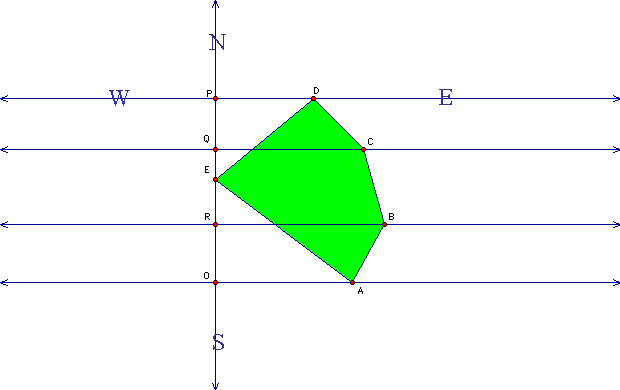First, think about why the surveyor used north-south and east-west lines.
The surveyor used north-south lines and east west lines because these are perpendicular lines. By using the given measurements, AO=37 m, BR = 47 m, CQ = 42 m, DP = 28 m, PQ = 13 m, QE = 7 m, ER = 19 m, and RO = 18m, the surveyor set up 3 trapezoids and the found the areas by using the formula, A=1/2 h(b(1) + b(2))
A= ![]() =
2368. This area is more than the area of the tract of land so
we must subtract the additional plots of lands. These plots are
2 right triangles:
=
2368. This area is more than the area of the tract of land so
we must subtract the additional plots of lands. These plots are
2 right triangles:
A=![]() =964.5
=964.5
So the total area of the surveyed land is 2368-964.5 = 1403.5 square meters.
